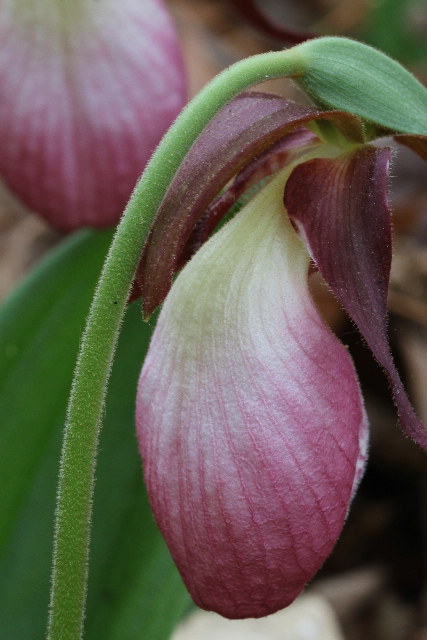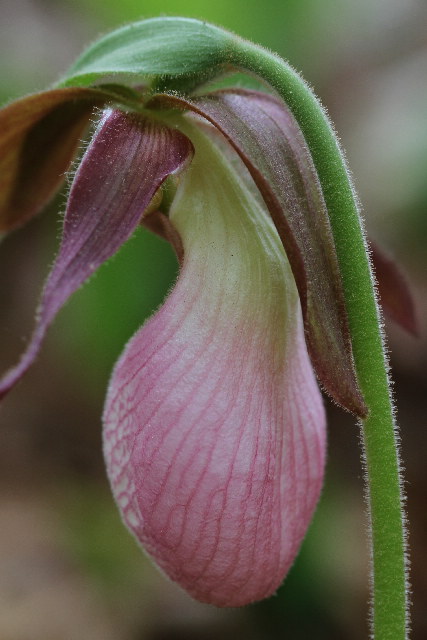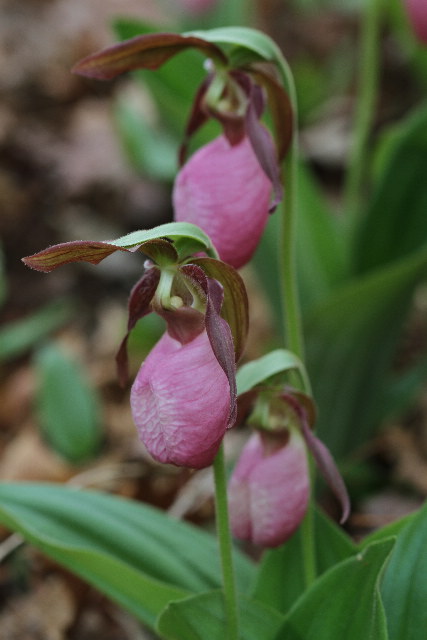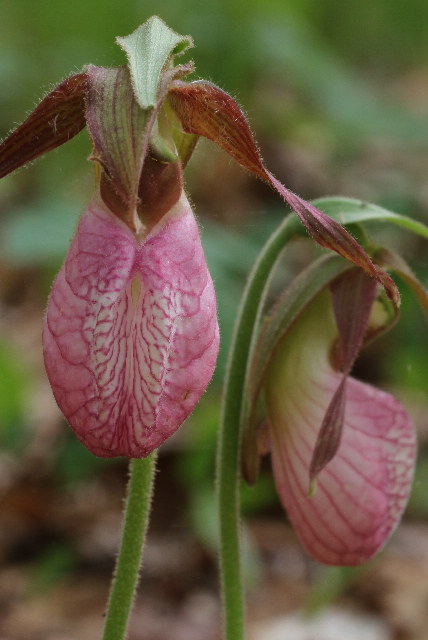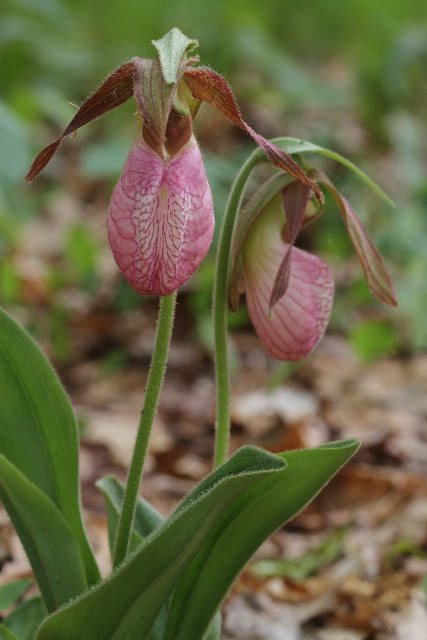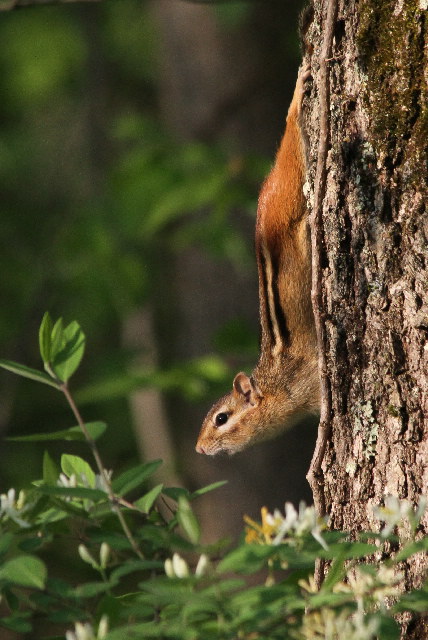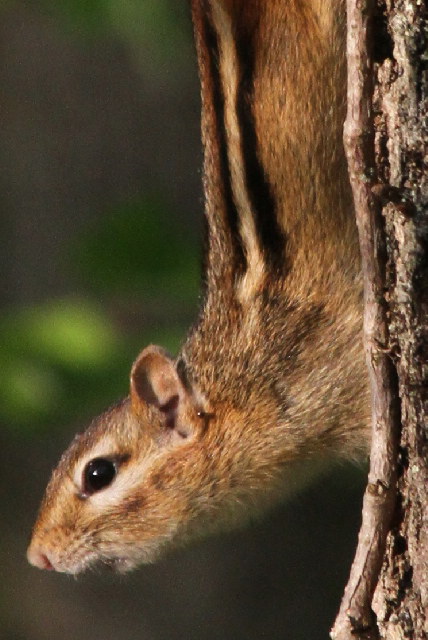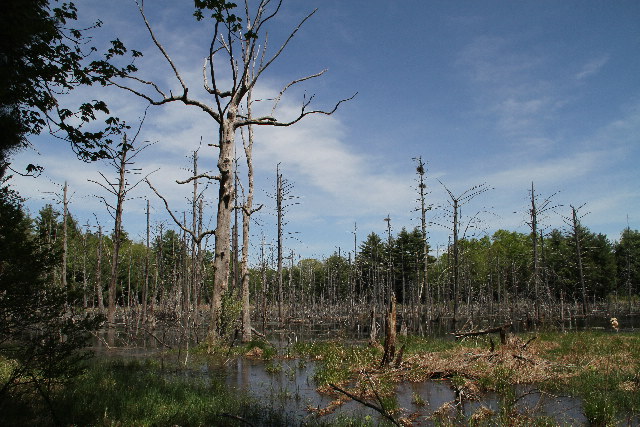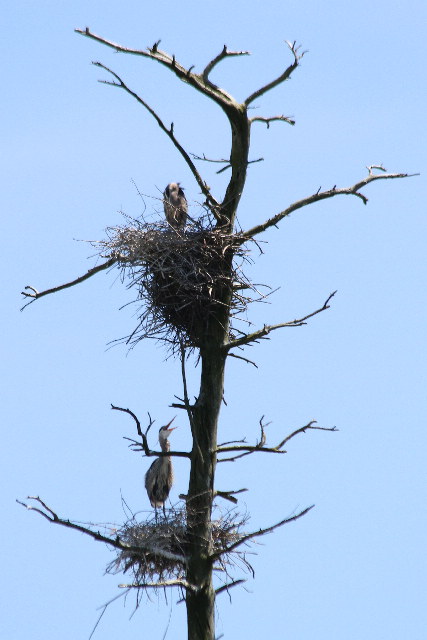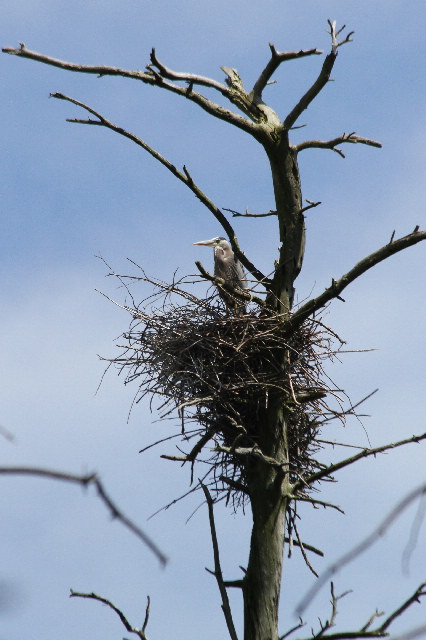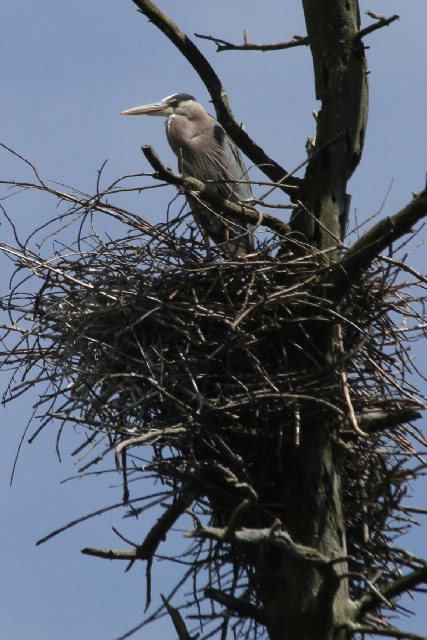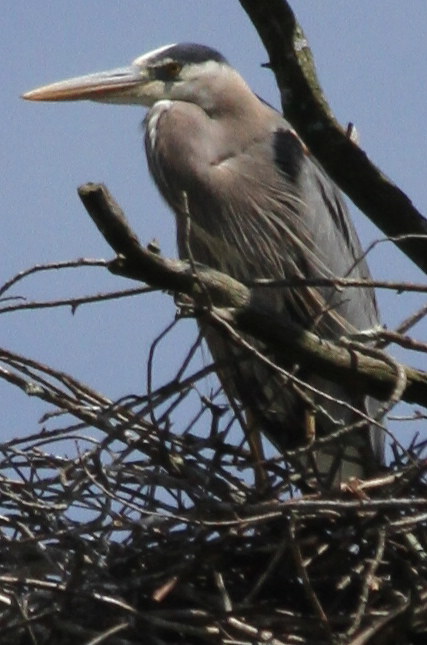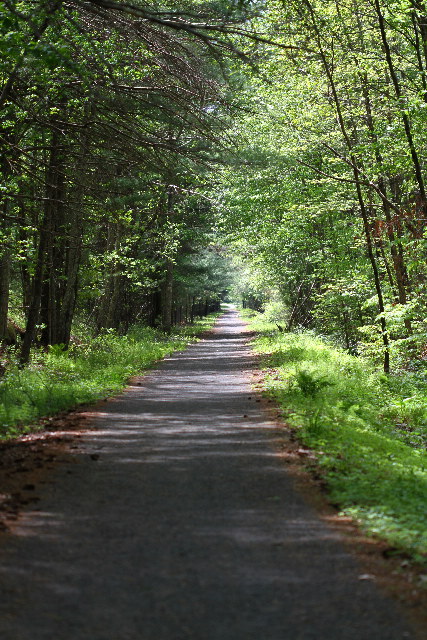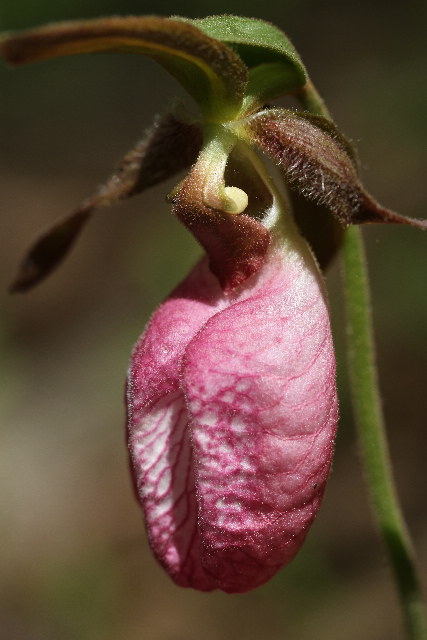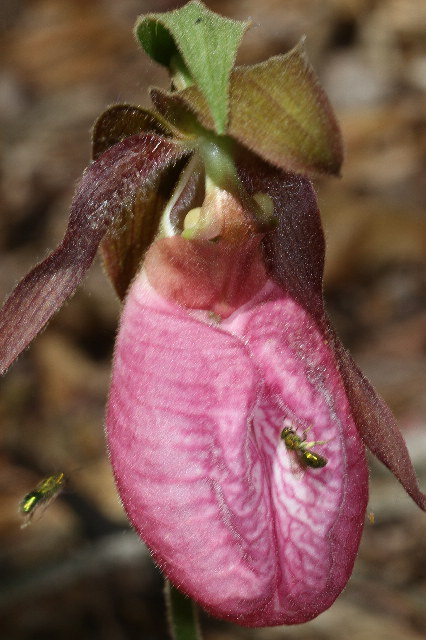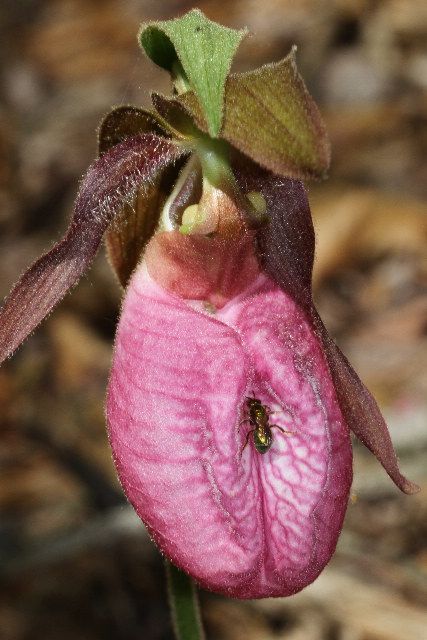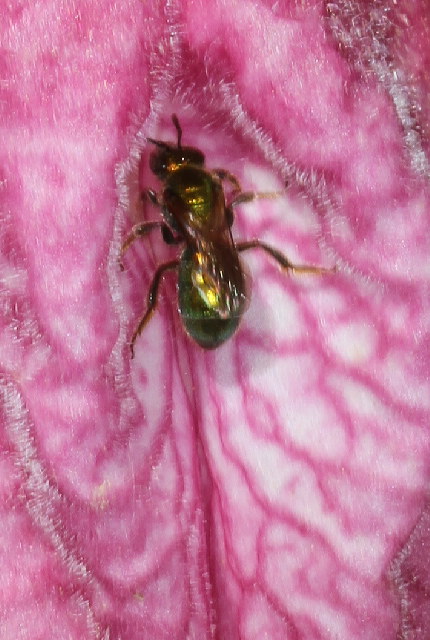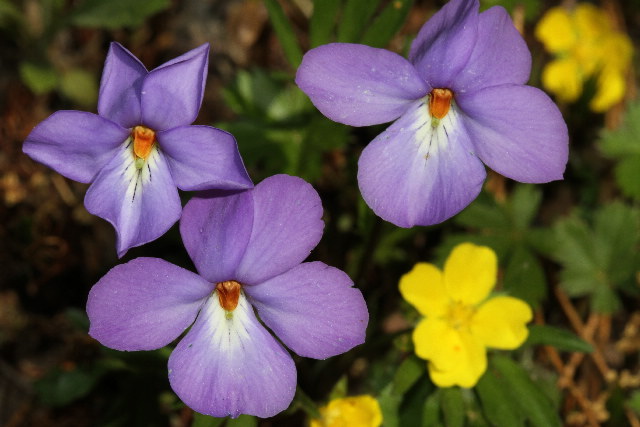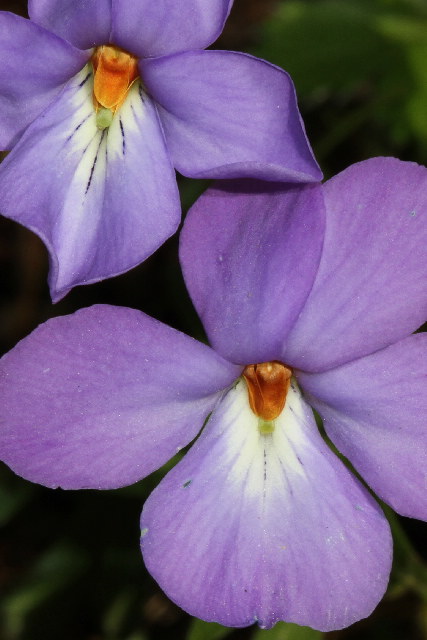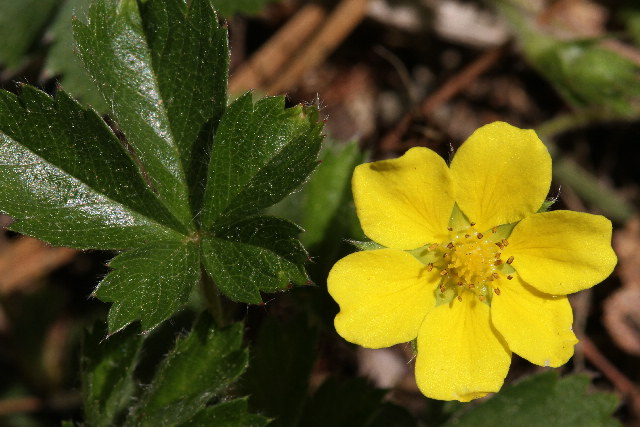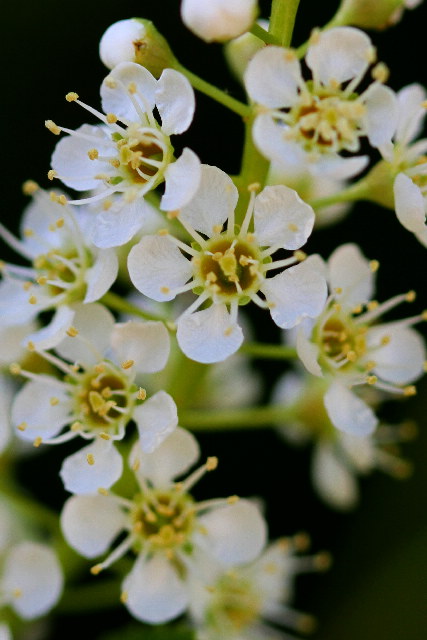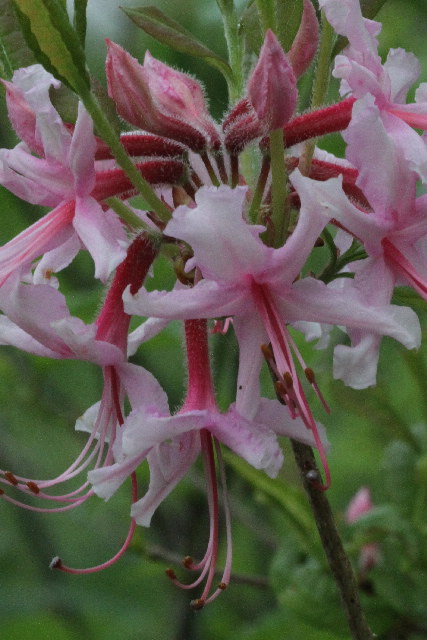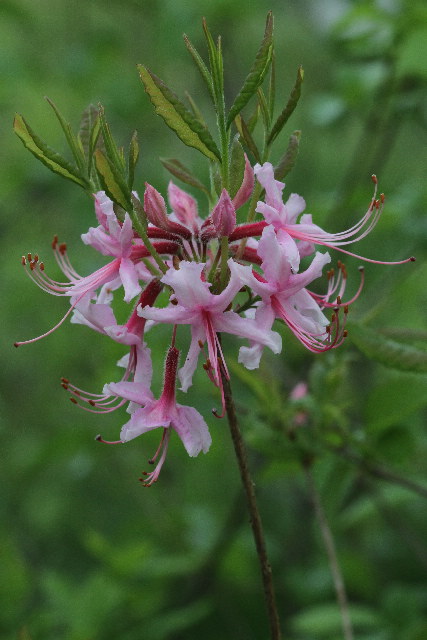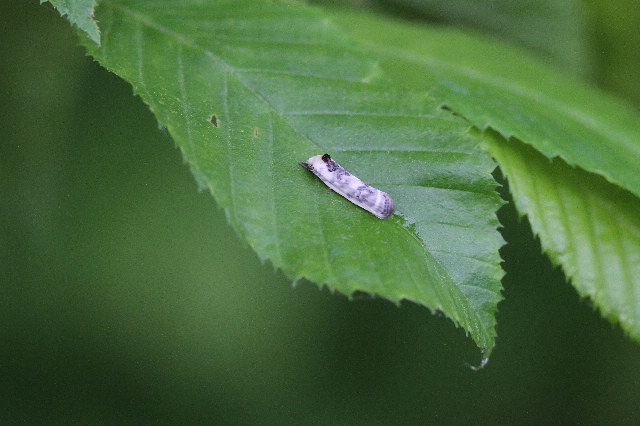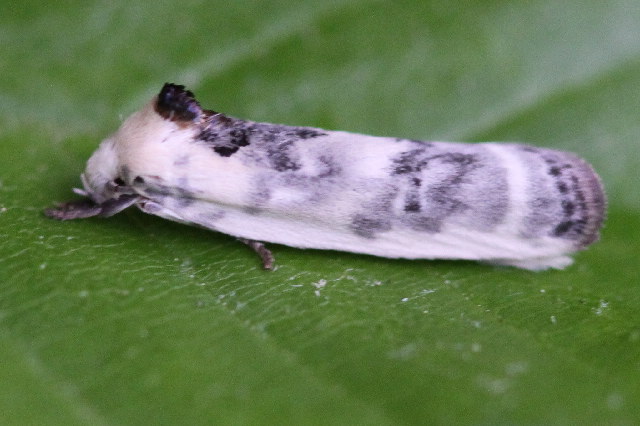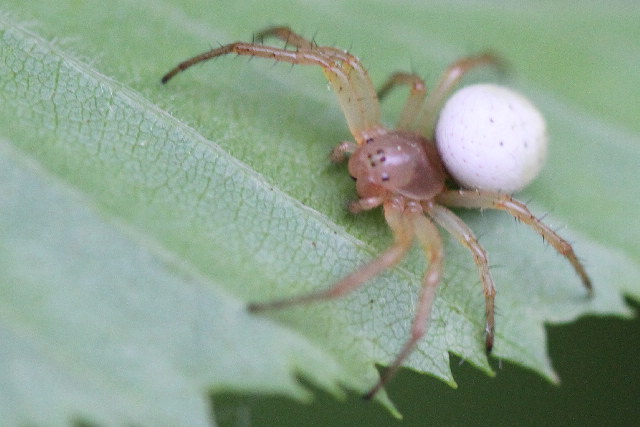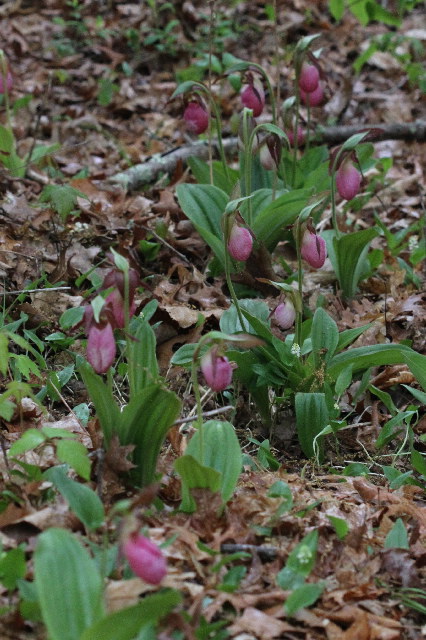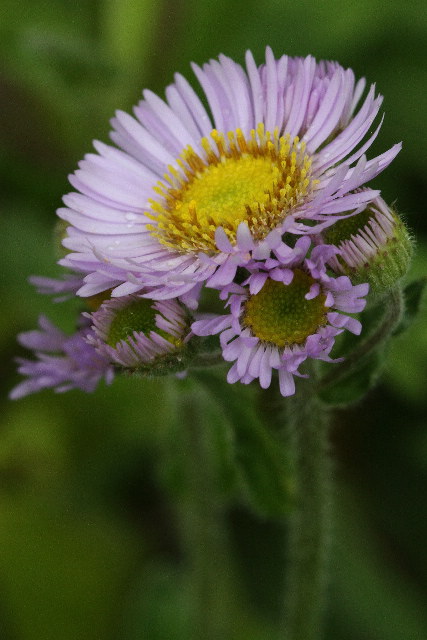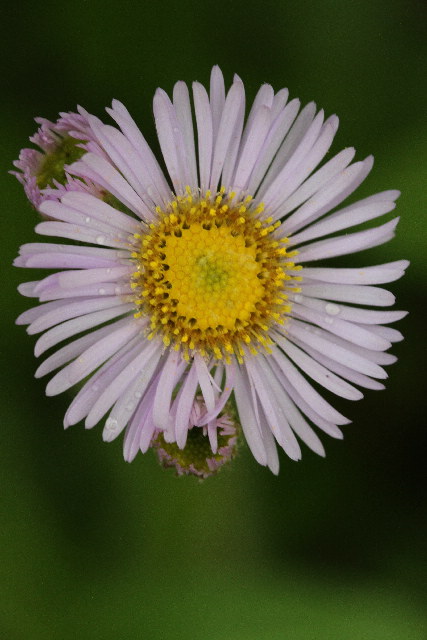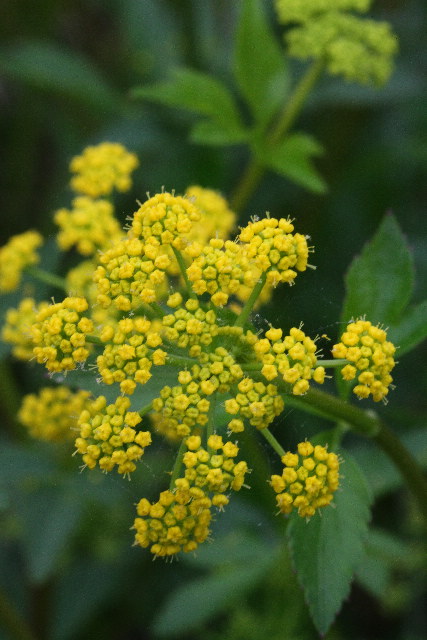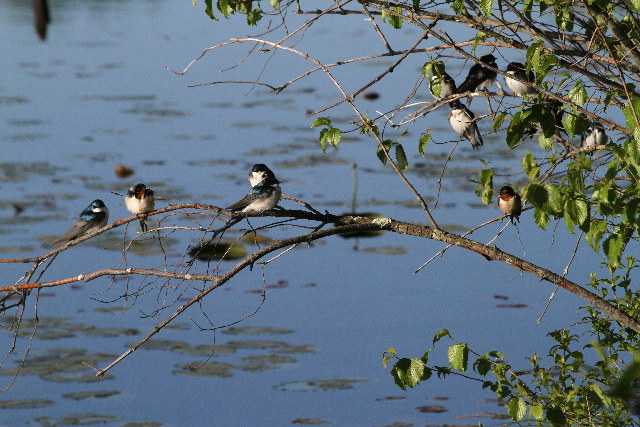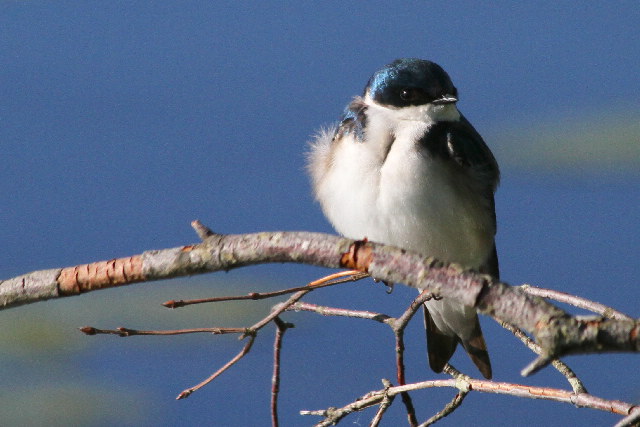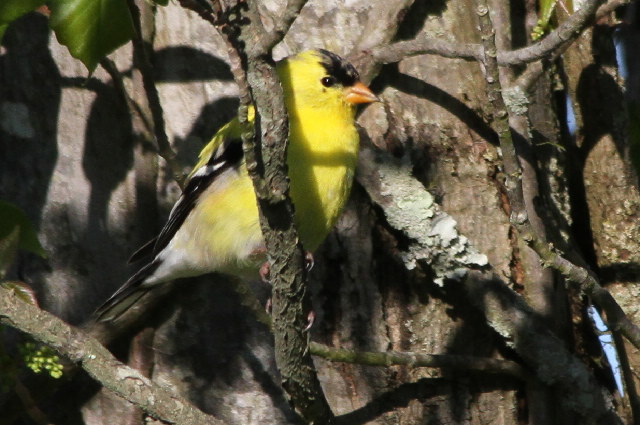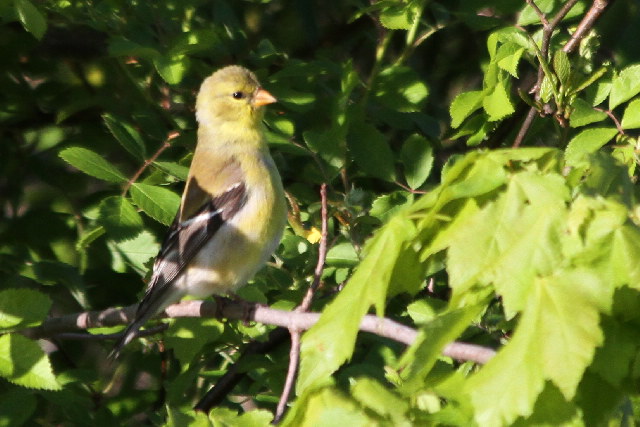Along the Air Line... 2010 - Spring, Part 10 The Air Line Trail in Eastern Connecticut - Stan Malcolm Photos |
mAir Line Home Page Stan's FlickR Albums |
May 6th. Pink Lady-Slipper Orchids (Cypripedium acaule). |
|
|
|
|
Eastern Chipmunk (Tamias striatus). |
Poor little guy has a tick behind its ear and possibly another on its shoulder. |
May 7th. An afternoon exploratory hike on the Air Line Trail just east of Willimantic, in search of Great Blue Heron nests I'd heard about. |
I found three nests in a beaver pond adjacent to the trail and just a short walk from Route 66. |
All three nests (right of center in this view) were active. |
Two of the nests were in the same tree. |
|
|
Although a stretch for my camera, the view with binoculars was quite good. |
The trail heading east is wooded, with a lot of pine. There are many side trails. |
Not much blooming, but I found a few Pink Lady-Slipper Orchids |
...including this one which had attracted several Halictid Bees. |
The orchid's pouch is split in the middle. The bees are guided by the color pattern, fringes of hairs, and the narrowing shape. |
They push their way in, but must exit past the pollen masses ("pollinia") and out through the top of the flower as the entrance is structured to be one-way only. The pollinia are quite large - much too large for these bees to carry on their backs: the orchids are probably pollinated by something much larger (i.e., Bumblebees). |
Birdfoot Violets (Viola pedata) were a pleasant surprise. |
|
They were among Dwarf Cinquefoils (Potentilla canadensis). |
Chokecherry (Prunus virginiana) was also in bloom. |
|
May 8th. Back to Raymond Brook Marsh and vicinity. Early Azalea (Rhododendron roseum). |
|
Why would I share a bird poop photo? |
Ah, this is a special bird poop; it has wings! Schlaeger's Fruitworm Moth (Antaeotricha schlaegeri). |
A female Six-spotted Orb Weaver spider (Araniella displicata). Thanks to Lou Sorkin of the American Museum of Natural History for the identification. |
|
Just to give you some idea how locally plentiful the Pink Lady-Slipper Orchids can be. |
Catching up on some common but unobtrusive flowers blooming now. Canada Mayflower or Wild Lily-of-the-Valley (Maianthemum canadense). |
\
Bastard Toadflax (Comandra umbellata), a root parasite. |
\
Morrow's Honeysuckle (Lonicera morrowi) is at its peak. |
Common Fleabane (Erigeron philadelphicus). |
|
Common Buttercup (Ranunculus acris). |
Golden Alexanders (Zizia aurea). |
May 10th. A chilly, breezy morning had Tree Swallows (Tachycineta bicolor) and a few Barn Swallows (Hirundo rustica) huddled for warmth on the sunny side of shrubs. There were probably 50 of them. |
Puffed up for maximum insulation from the 37 degree cold. |
I also saw a pair of American Goldfinches (Carduelis tristis). Male... |
...and female. |
